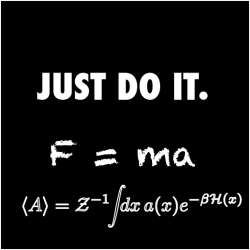
Summer Book Club 2014: Molecular Simulations and Theory
This summer’s Lab Book Club is designed to provide a thorough review of fundamental concepts for understanding biomolecular simulation and, in particular, molecular dynamics simulations (MD). The material is primarily based on textbook reading1,2 and has been chosen to roughly fit into the 8-9 weeks of the ASU summer calendar; several optional topics placed at the end to permit some flexibility in the coverage of material. All textbooks that are used are available online through ASU. Weekly topics are roughly chosen based on chapters from Statistical Mechanics: Theory and Molecular Simulation by Mark Tuckerman.1
The Book Club is organized by Sean Seyler. Contact him if you are interested in participating.
Reading materials
All reading materials are either available through the Zotero Group Becksteinlab Book Club or as ebooks through ASU1,2.
For additional information you can also have a look the old course pages for PHY494/PHY598/CHM598 — Simulation approaches to Bio- and Nanophysics.
Syllabus
The Syllabus for 2014 is available from the Zotero group. In outline:
- Week 1
- Classical mechanics and statistical mechanics
- Tuckerman ch 1 & 2
- Week 2
- The microcanonical ensemble and MD
- Tuckerman ch 3
- Week 3
- The canonical ensemble
- Tuckerman ch 4
- Week 4
- Isobaric ensembles
- Tuckerman ch 5
- Week 5
- Free energies: equilibrium approaches
- Tuckerman ch 8
- Week 6
- Free energies: non-equilibrium work methods
- Tuckerman ch 8
- Week 7
- Time-dependent statistical mechanics
- Tuckerman ch 13
- Week 8
- Langevin equations
- Tuckerman ch 15
- Week 9
- Monte Carlo methods
- Tuckerman ch 7
References
- a b c Mark E. Tuckerman. Statistical Mechanics: Theory And Molecular Simulation, 2010, Oxford University Press, Oxford (ebook at ASU)
- a b Daan Frenkel and Berend Smit. Understanding molecular simulation: from algorithms to applications. 2002, 2nd ed., Computational science series. Academic Press. (eBook at ASU)


Discuss: “Summer Book Club 2014: Molecular Simulations and Theory”